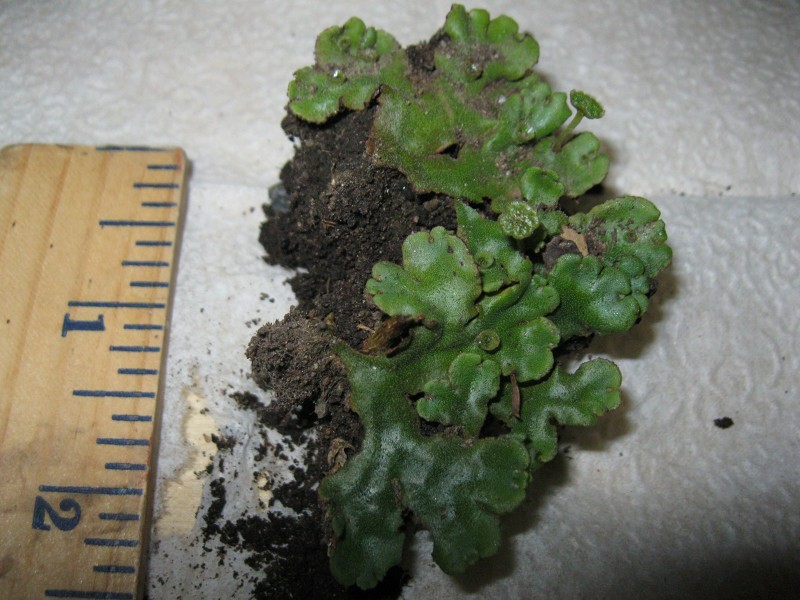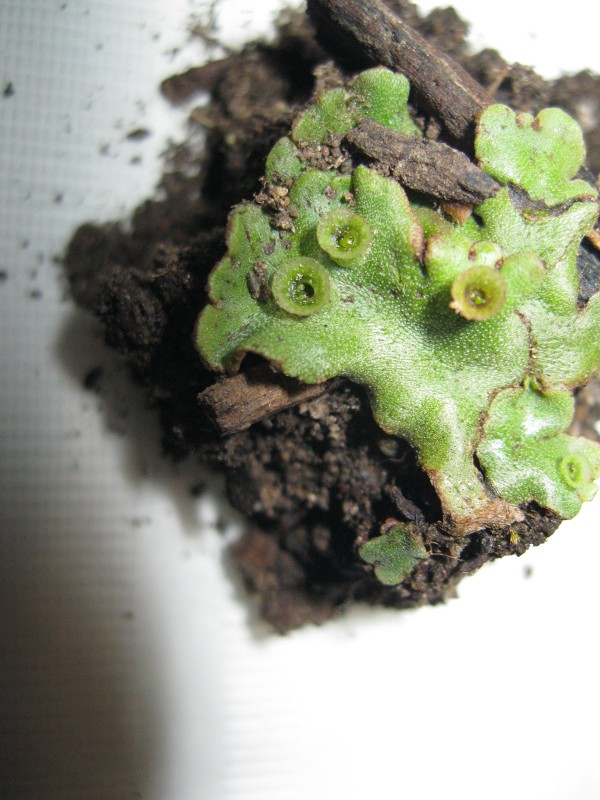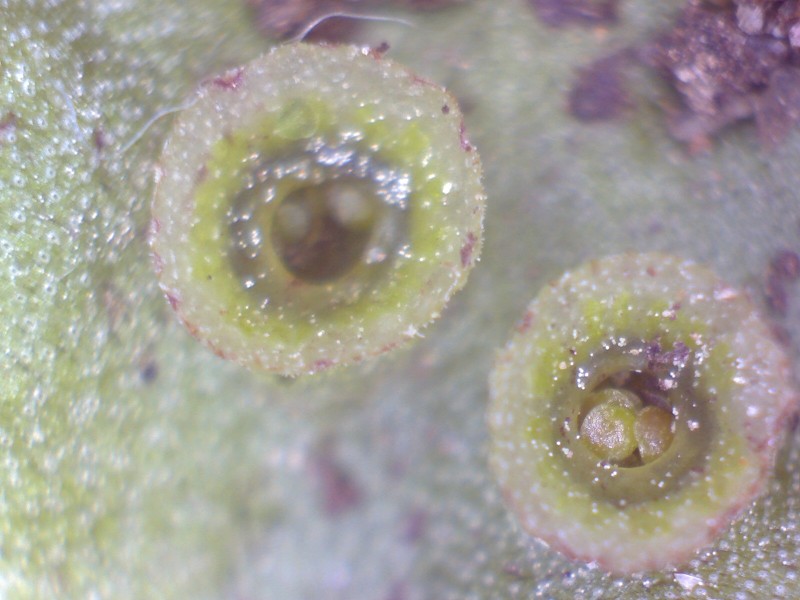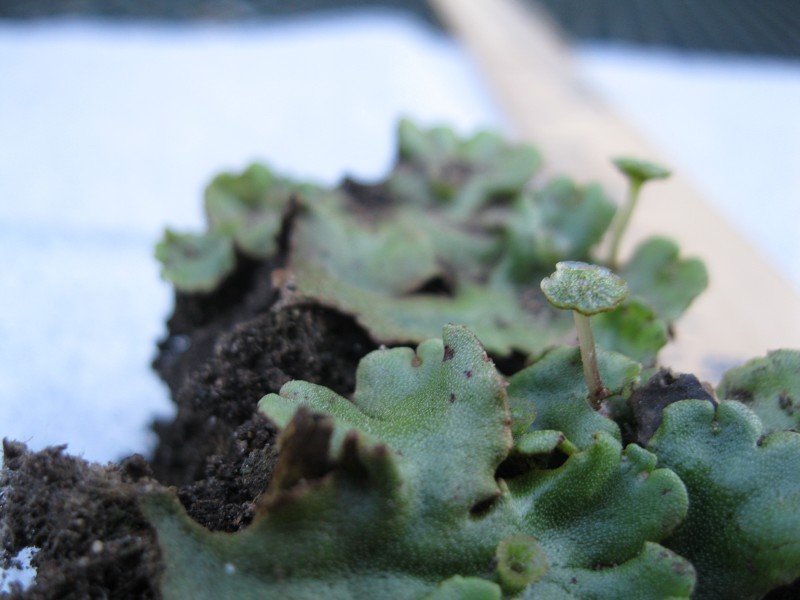Liverwort-- Marchantia polymorpha
Posted by Elmer 7/9/12 --- Scroll Down to See the Discussion
Elmer: This "thing" has an amazingly complex structure.
Paul W: Looks like a liverwort to me.
Put liverwort into Google and you'll get some good images.
just got back from the east side of Mt Hood at 3,700 to 4,000 feet.
Combed the pines for morels but not a one.
I thought I might have a chance with the cool spring….
People in Hood River said morels are over but had some fresh porchini.
Do we need to have a porchini trip?
Skye: Looks like a liverwort to me as well,
but sent a copy of the pictures to Cheshire since
she is our lichen lady and probably knowns her liverworts as well.
Sava: We had a "porcini trip" last Saturday to Mt. Adams, along Road 23.
We hunted rather low, soon after the entrance to the national forest and we found some,
and also found traces of massive picking.
If you try higher up on Road 23, maybe you'll find them.
All those that we found were close to the road.
Judy: Your photos are of a liverwort, genus of Marchantia.
It is quite common here in moist areas,
(seeps, near slow streams, almost swamps, etc.,)
even shade gardens in our yards.
I love the little guys and have some growing in my shade garden.
You can even find them in some greenhouses that have a lot of moisture and
they will grown under the benches or even on them if some of the benches hold soil.
They propagate by spores, produced in those gemmi cups you photographed.
The spores get transported just like mushroom spores,
so that's how they can get into moist shade gardens in yards.
Sometimes they even ride home from garden stores where you buy potted plants.
I often will choose a pot that has one in it.
There are several species in the PNW, and I don't know them that well.
Paul's suggestion for looking in Google under liverworts,
or even go to Marchantia, and you can find all kinds of interesting info.
Elmer: Thanks! The breath of your knowledge is truly amazing.
The complexity of the structure of that liverwort is truly amazing to me.
It is clear that the little cups are for the spores.
Do you have any idea what function the "mushroom like" protuberances perform?
Again thanks!
Judy: Have to apologize, I sent some slightly erroneous info,
as my husband was impatiently waiting for me to finish so we could get down to the
garden before it got too hot.
It is a leafy liverwort, a species of Marchantia,
and all that part was right.
But the gemme cups are for spore-like propagules for asexual reproduction.
They do operate like birds nest fungi and are splash cups.
For sexual reproduction, it takes two to tango,
and one plant will have the tall mushroom-like umbrellas -
kind of gently and lobed, and is the male, or antheridial,
structure, while another plant nearby will have tall little structures that look like umbrellas without the fabric cover - just the spokes. The undersides of the those spokes have the female sporophytes, for the sexual reproductive stage.
They can also reproduce by a leaf or piece of leaf that has broken from the main plant,
and it can take root and grow into a new plant as well.
They are neat little creatures.
If you are interested, the OMS library has a great book Mosses and Other Bryophytes,
an Illustrated Glossary by Bill and Nancy Malcom that can be borrowed.
I also have a couple books:
101 Common Mosses, Liverworts and Lichens of the Olympic Peninnsula and also
Mosses, Lichens & Ferns that I also loan out.
They have great photos and good explanations and helpful for identification.
You might be interested checking them out to learn more.
Some of these understory and ground cover plants are as fascinating as fungi.
Many are just beautiful for close-up photography too.
L&J N: Probably Marchantia polymorpha (see photo )
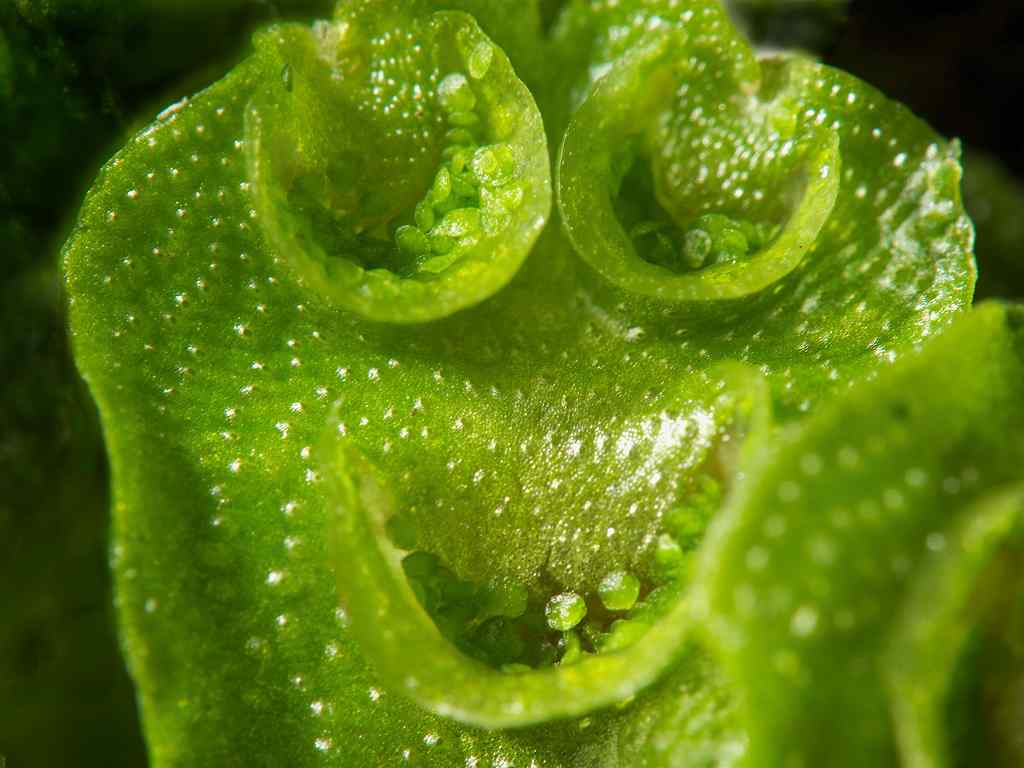
Judy absolutely gorgeous photo Luurt!
Elmer: From the internet I see that the "cups" and "mushroom like structures"
are the male and female.
Amazing!!
Click Here for more photos
